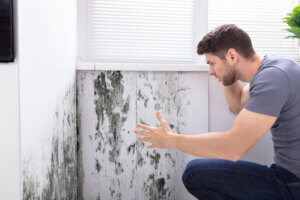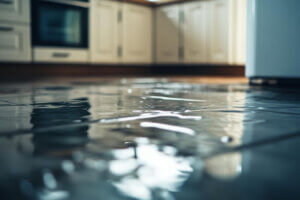When flooding or water damage affects your home, one of the most vulnerable areas is your carpeting. Water-soaked carpets not only look unsightly but can also harbor dangers such as mold, mildew, and foul odors if not treated promptly. Acting quickly to remove the water and dry your carpets is essential to maintain a healthy living environment.
Carpet fibers and padding are designed to absorb moisture, making them a prime target for water damage. Once they get wet, they can hold onto that moisture for an extended period, leading to further issues like structural damage to the flooring underneath and serious health risks. Assessing the extent of the water damage early on will help determine the right course of action and necessary tools to restore your carpets effectively.
Ignoring wet carpets can lead to costly repairs and replacements later on. Our goal is to guide you through understanding the damage and equipping you with the knowledge and steps needed to effectively dry out your carpets, preventing secondary damage such as mold growth and lingering odors. Let’s explore the steps to take to bring your carpets back to their pre-flood condition.
Assessing the Extent of Water Damage to Carpets
When your carpet gets wet, it’s crucial to quickly assess how much damage has occurred. Understanding the extent of the water damage helps in deciding whether you can fix the problem yourself or if you need professional help. We start by checking the type of water that caused the damage. Clean water from a leaky pipe is less harmful than dirty water from a flood or a sewage backup. The source of water impacts how you handle the situation.
Check the carpet padding and the floor beneath it. You might need to lift a corner of the carpet to inspect the padding and subfloor for any signs of soaking. If these layers are wet, the damage is more severe and drying them is more complicated. Look for any visible staining or discoloration which can indicate deeper problems. Remember, quick action reduces long-term damage and costs.
Tools and Materials Needed for Drying Carpets
Drying a wet carpet requires some essential tools and materials. Having these ready can help speed up the drying process and reduce the risk of mold growth. Here is a list of items you’ll need:
1. Wet/Dry Vacuum: A wet/dry vacuum helps remove excess water quickly. It’s more effective than towels or mops and is a must-have for any water removal task.
2. Fans: Electric fans promote airflow and help dry the carpet faster. Place them strategically to cover the entire area.
3. Dehumidifiers: These machines remove moisture from the air, speeding up the drying process and preventing mold buildup.
4. Carpet Padding: In cases where the padding is soaked and unsalvageable, replacing it is necessary.
Make sure to have these tools on hand to efficiently tackle any water damage to your carpets. Proper tools not only make the process quicker but also help in thoroughly drying out your carpet, preventing any lingering issues.
Step-by-Step Process to Remove Water from Carpets
Removing water from your carpet can seem overwhelming, but breaking it down step-by-step makes it manageable. First, carefully use a wet/dry vacuum to suck up as much water as possible. Move slowly over the damp areas to ensure that you’re removing the maximum amount of water.
Next, lift the edges of the carpet to get air circulating beneath it. Placing fans around the room speeds up the drying process. Point the fans directly at the wet spots and let them run continuously. Then, use a dehumidifier in the room to extract moisture from the air. Empty the dehumidifier regularly to keep it running efficiently.
Regularly check on the carpet’s progress. Flip the sections back down only when both the carpet and padding are completely dry. This might take several hours or even days, but it’s crucial to avoid mold growth. Patience in this step prevents further complications later.
Preventing Mold and Odors After Drying Out Carpets
Even after your carpet is dry, ongoing vigilance is needed to prevent mold and odors. First, use a disinfectant to clean the carpet and affected areas. This step helps kill any mold spores that might have settled during the water exposure. Apply the disinfectant generously and allow it to air dry completely.
Next, sprinkle baking soda over the carpet. Let it sit for several hours before vacuuming it up. Baking soda absorbs lingering moisture and neutralizes any odors. To maintain a dry environment, use a dehumidifier regularly and ensure your room is well-ventilated. Open windows or use exhaust fans to keep air moving.
Finally, consider professional cleaning services for deep sanitization. Even with thorough home efforts, professional cleaning ensures any hidden mold or mildew is addressed and your carpet is restored to its best condition.
Final Thoughts
Water damage to carpets can be more than just an inconvenience; it poses real risks to your home and health. Taking quick, deliberate steps to remove water and thoroughly dry your carpets is essential. By assessing the damage, using the right tools, and following effective cleaning and drying methods, you can minimize the impact of water damage. Prevention is key, so keep your home well-ventilated and use dehumidifiers to maintain a dry atmosphere.
Here at Premier Emergency Water Removal, we understand how stressful dealing with water damage can be. If you need professional assistance to restore your home, contact us today for expert help. We’re here to provide guidance and services to ensure your carpets and home are in the best possible condition.



